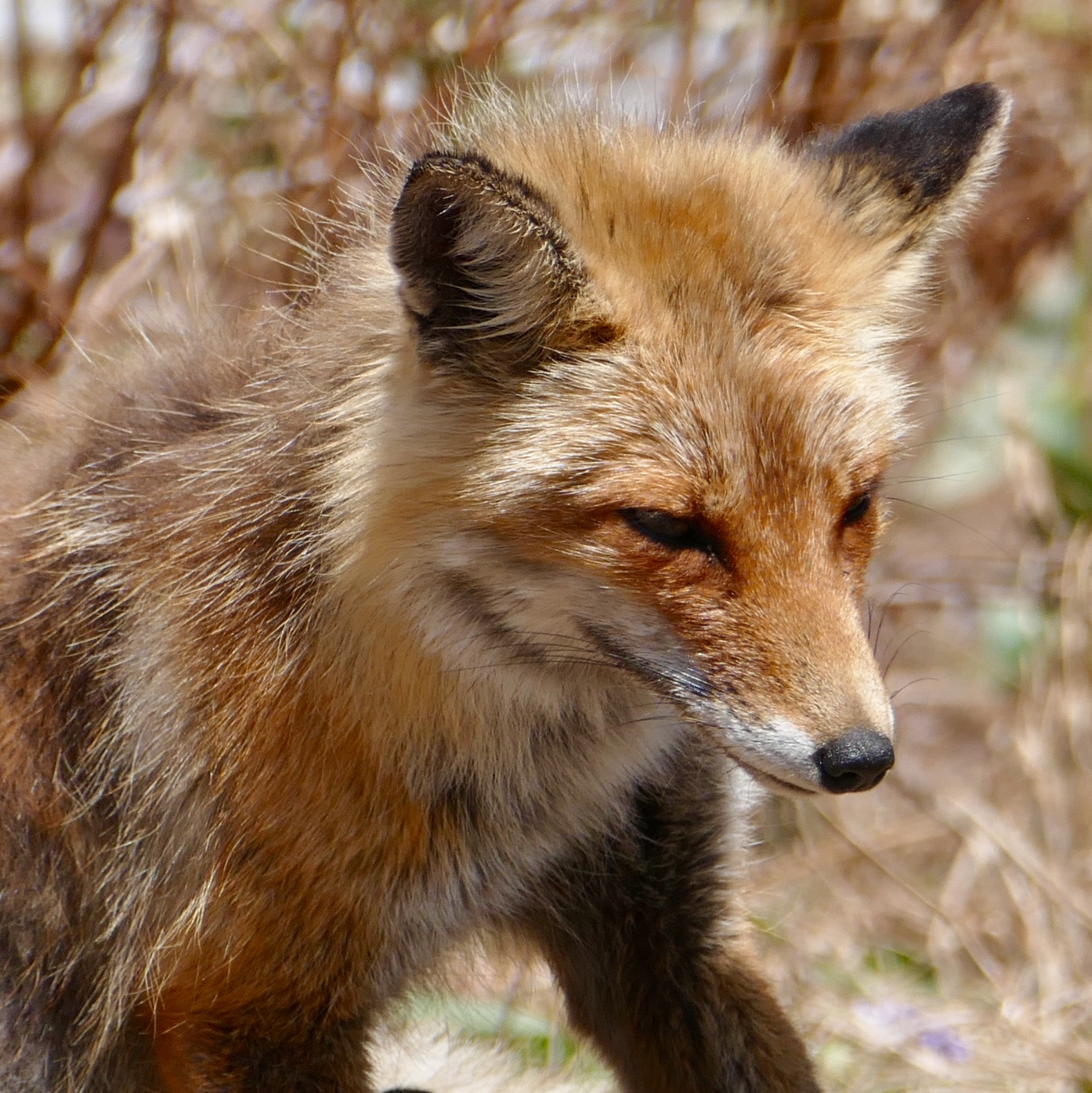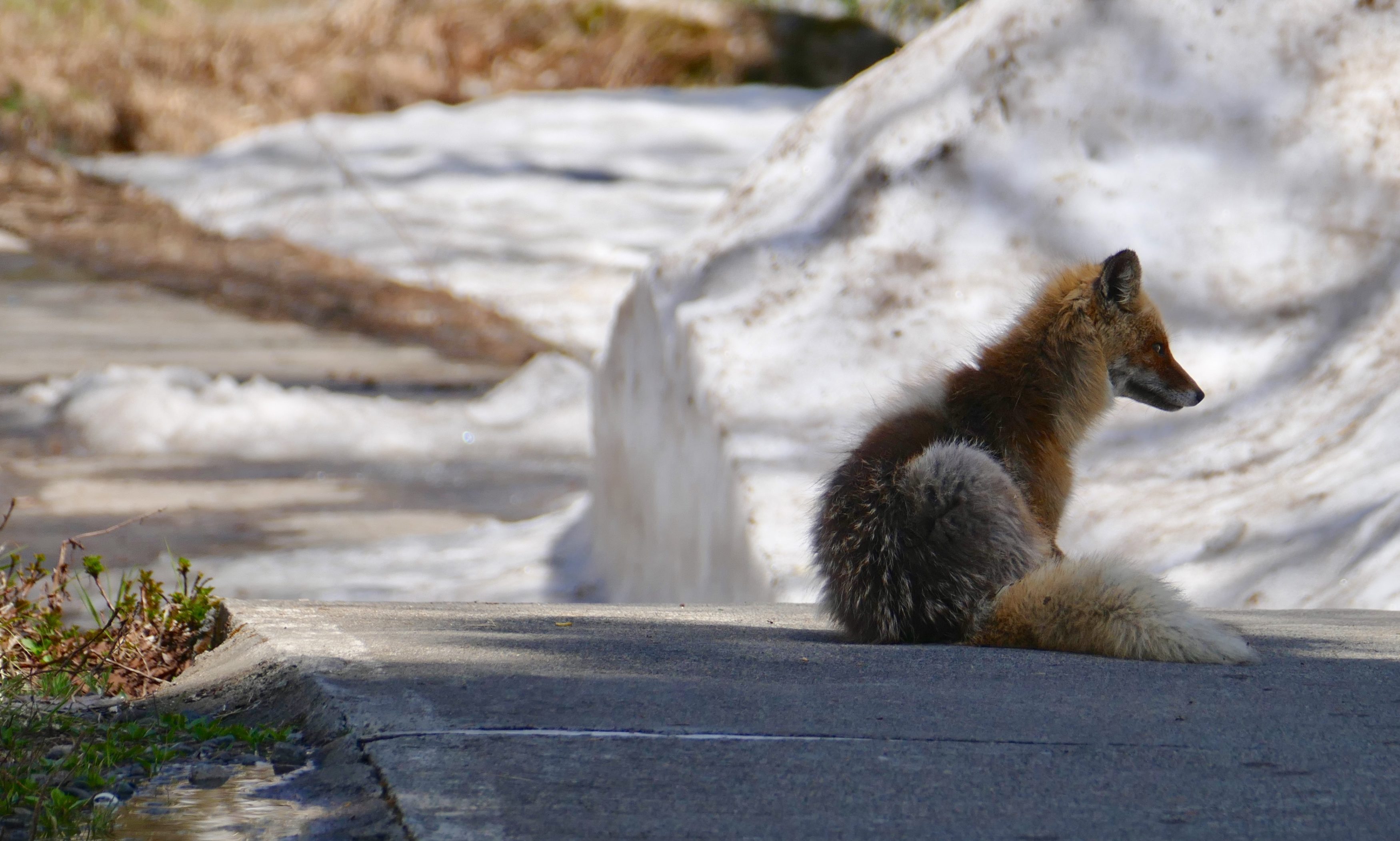(second episode in an occasional series)
The featured image shows this individual as he or she first became visible to us.
In Hokkaido the local foxes “belong” – they are not feral, and most local humans do not regard them as “vermin”.
Accordingly – when well aware of nearby human presence – some of Hokkaido’s foxes behave in a relatively “relaxed” fashion that would be unimaginable in Australia.
On the morning of May 29 2017 – springtime in northern Japan – my beloved and I were on a still-snowy mountain in Daisetsuzan National Park.
The name means “great snowy mountains”; its high peaks are just a little higher than any in Australia, but rather more rugged than Australia’s…and very much colder and snowier.
Its highest peak – Asahidake – is Hokkaido’s highest, at 2,290 metres.
Asahidake is one of Daisetsuzan’s 16 peaks that exceed 2,000 metres.
We were a little lower that morning, most of the way up Kurodake, whose summit reaches 1,984 metres, just 2 metres shy of Victoria’s highest peak, Mount Bogong.
In English references Kurodake is oft-called “Mount Kurodake”; this mistranslation means “Mount Kuro Mountain”, and it reminds me of apartheid-era South African governments’ references to “the Bantu people”…they were unwittingly talking of “the people people”!
Kurodake rises up behind Sōunkyō Gorge; invisible when one stands beside the riverbank near the gorge’s celebrated waterfalls, Kurodake suddenly appears when one walks up toward the gorge’s rim.
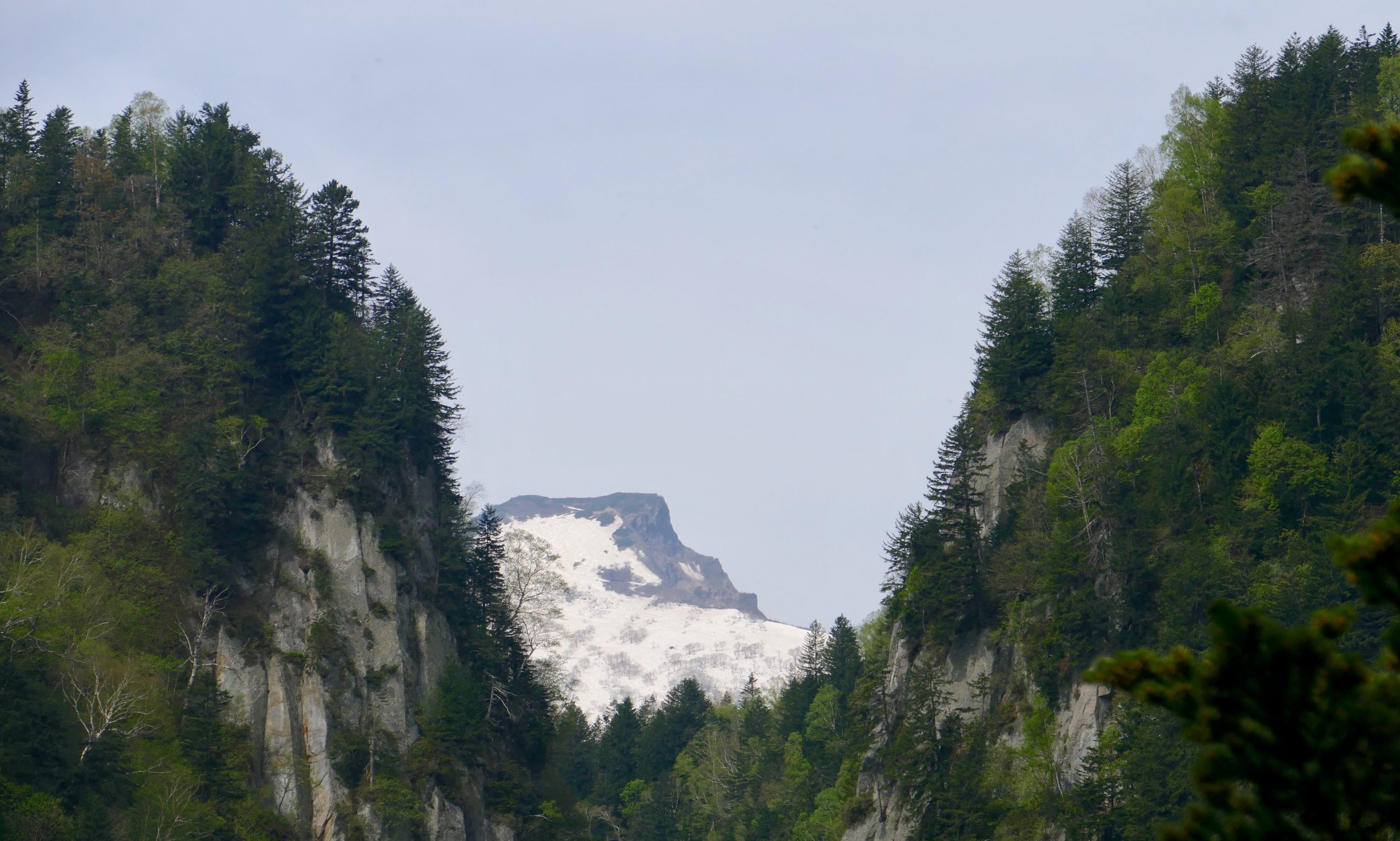
A ropeway quickly takes one from the Sōunkyō Onsen (hot springs) Resort to the main ski run’s bottom end, which is more than two thirds of the way up Kurodake.
That morning the sun-warmed snow was a little soft, so our party walked up into deep snow, but not right up to the summit.
Our fellow travellers then had a nice, noisy round of snow sliding.
My back said “no”.
In any event we two craved some quiet.
So, alone together, we headed downhill.
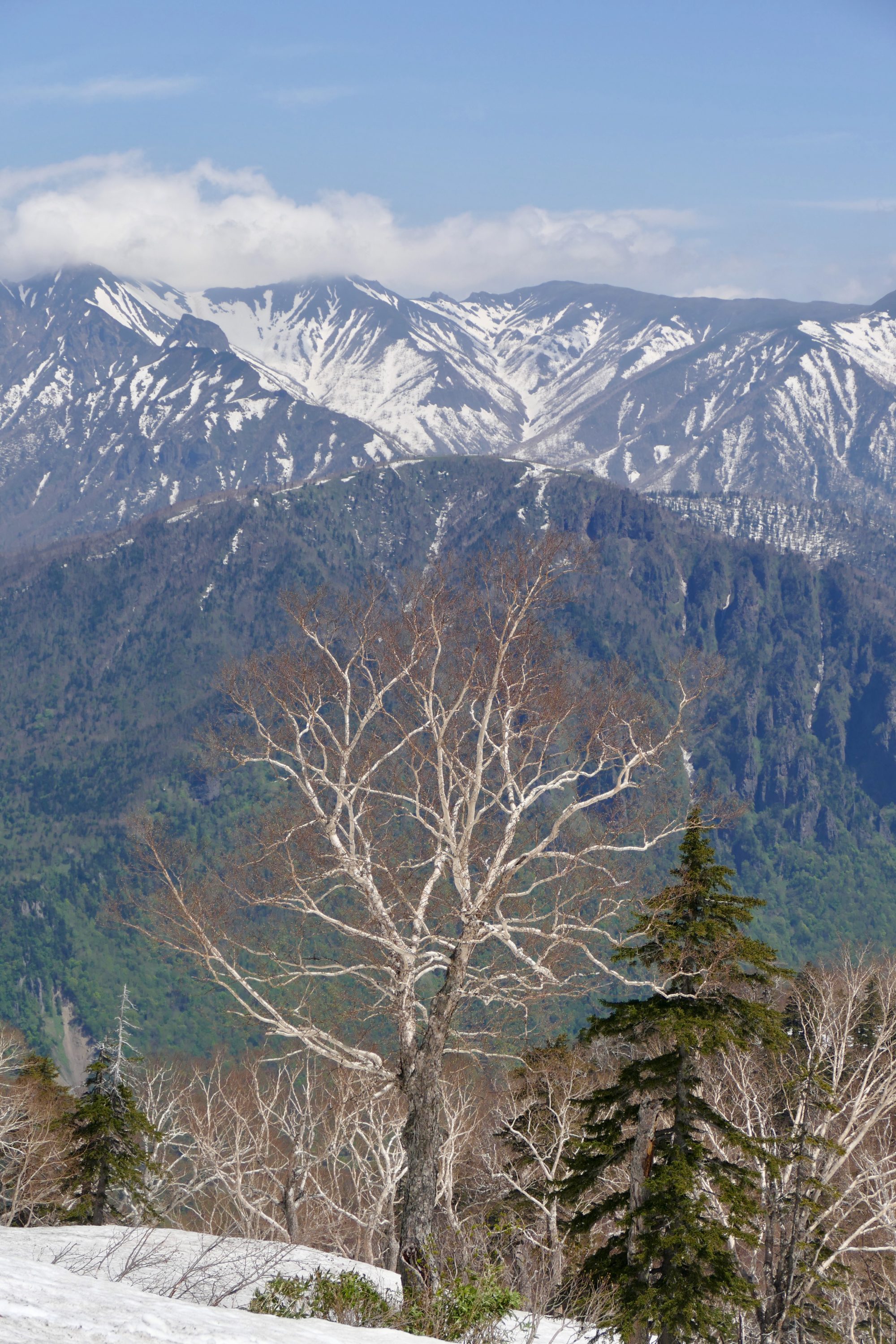
Just a little before we reached the Ropeway station, we saw a fox.
Of course, it had sensed/seen us, too.
Almost always, when a human enjoys a close encounter with a wild animal – most especially, with a predator – that encounter is “granted” by the animal, after the animal has assessed the human’s behaviour.
Vulpes vulpes schrenck, the Ezo Red fox – also known as the Hokkaido red fox – is a subspecies of the red fox.
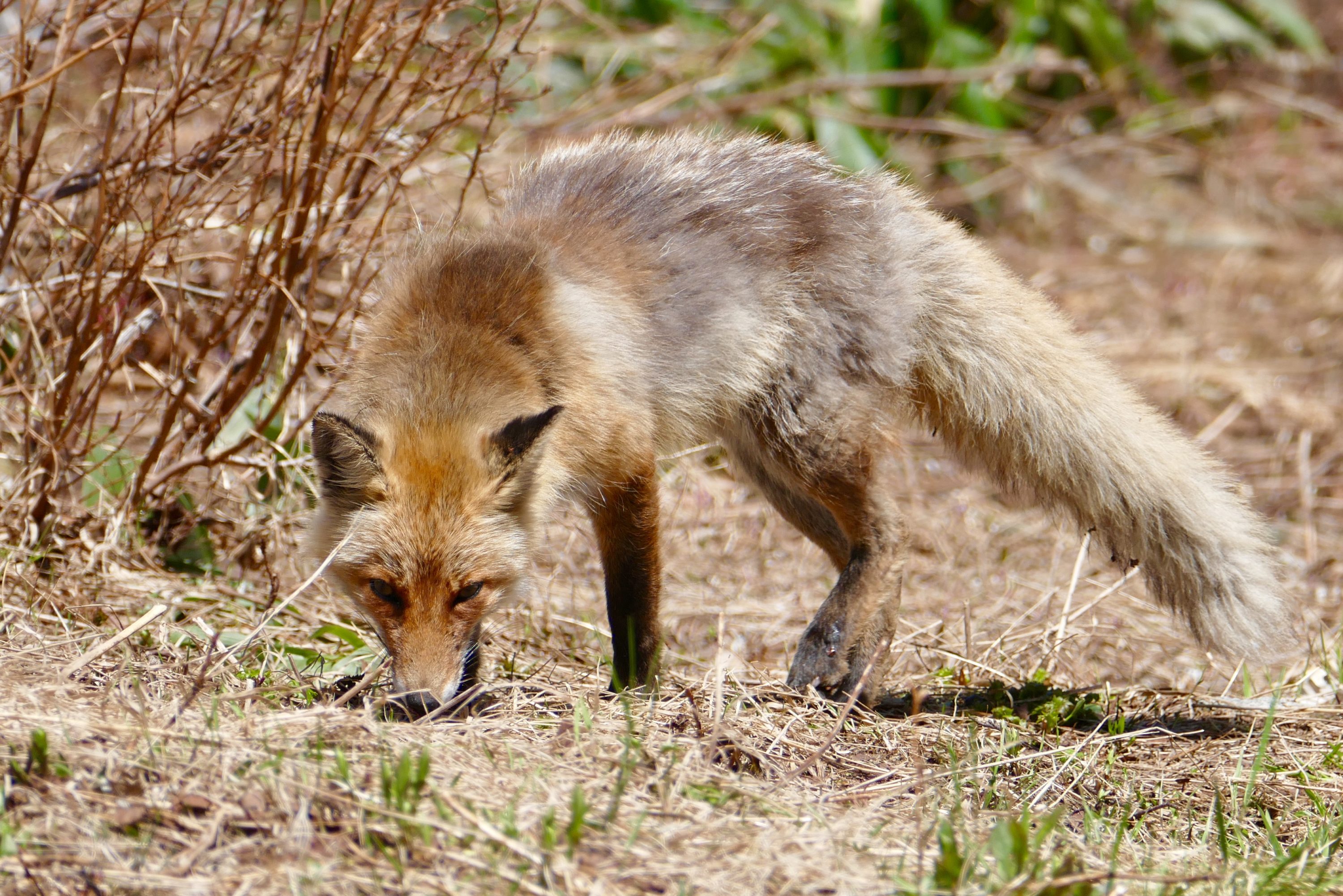
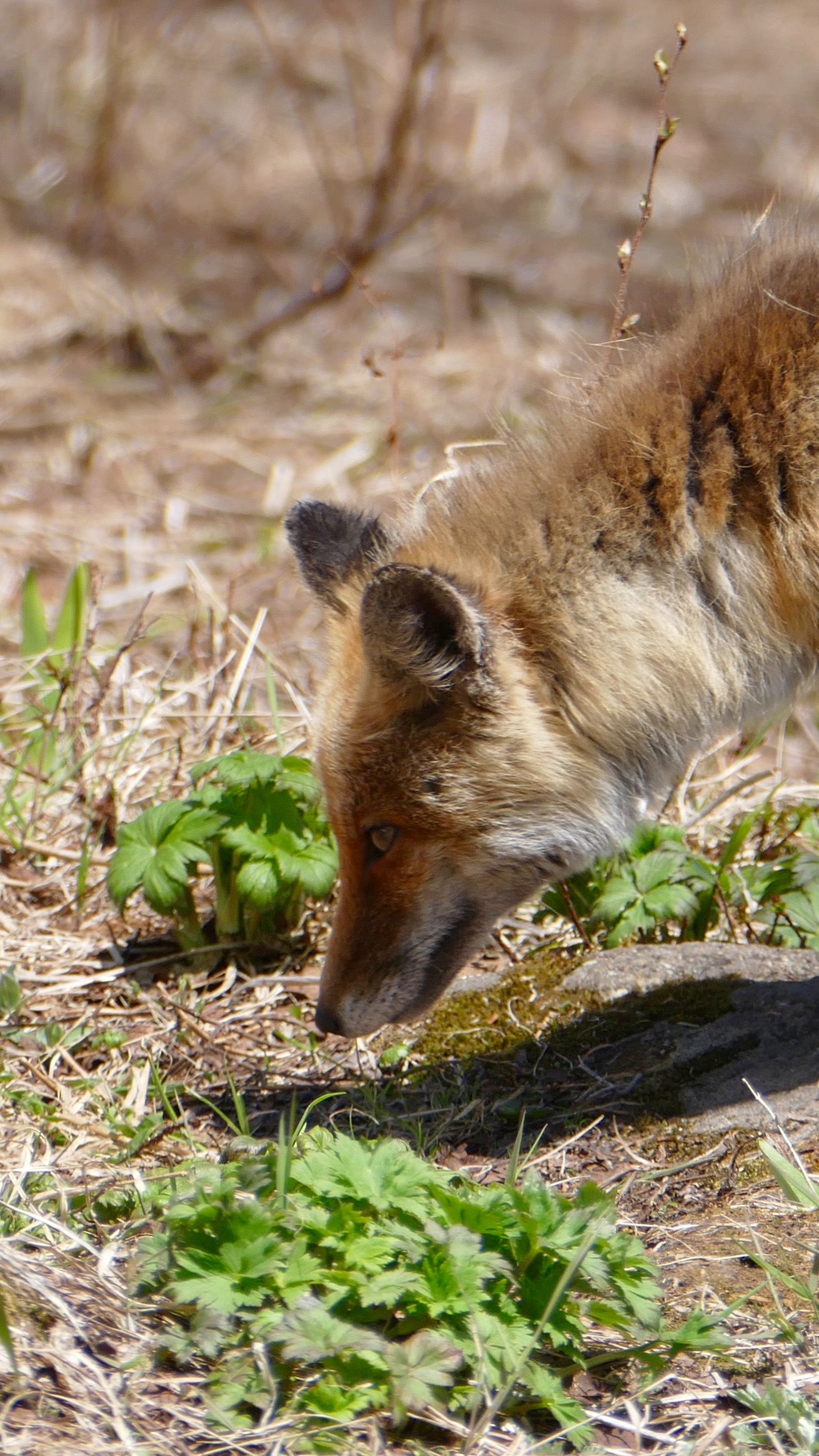
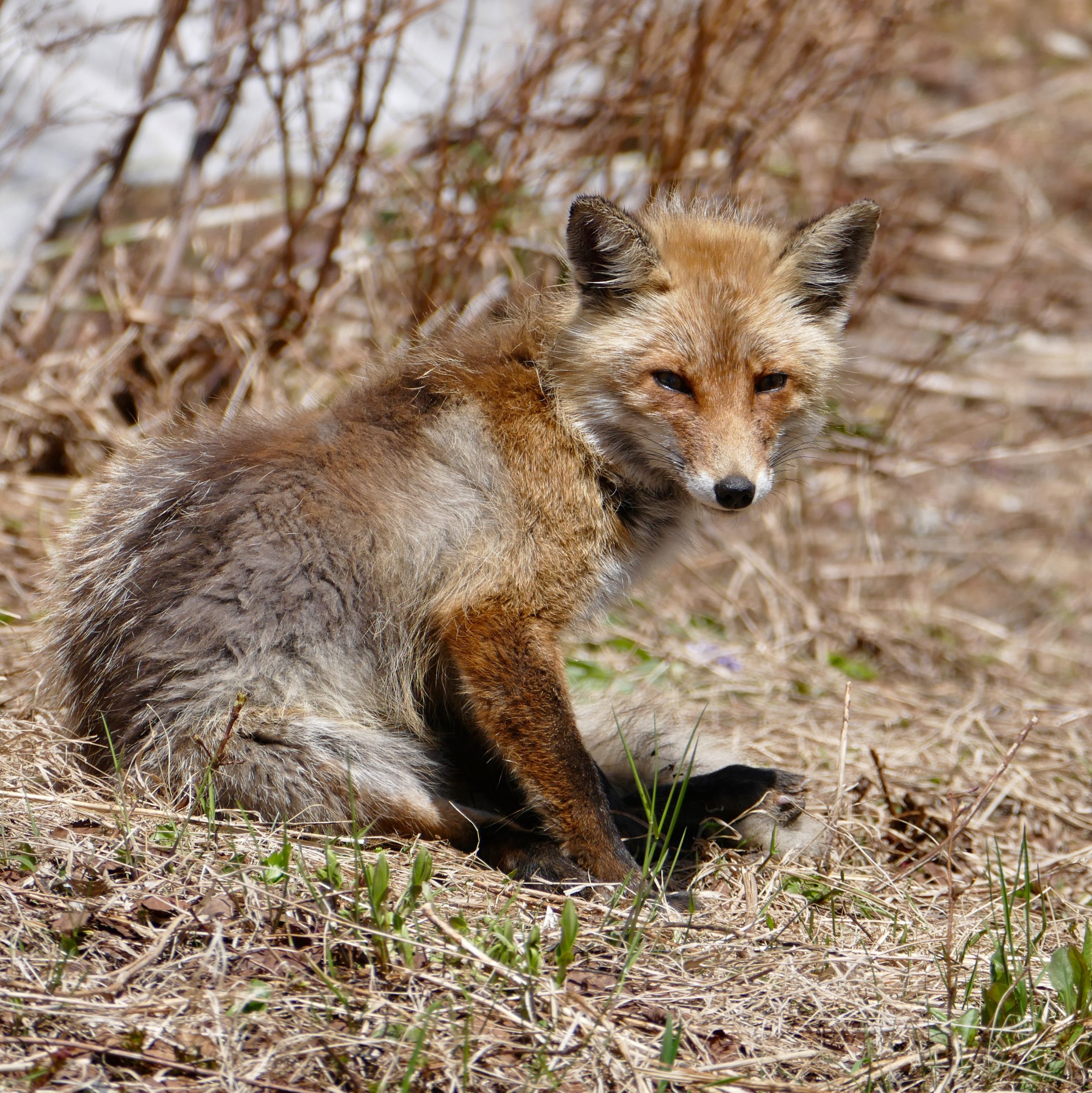
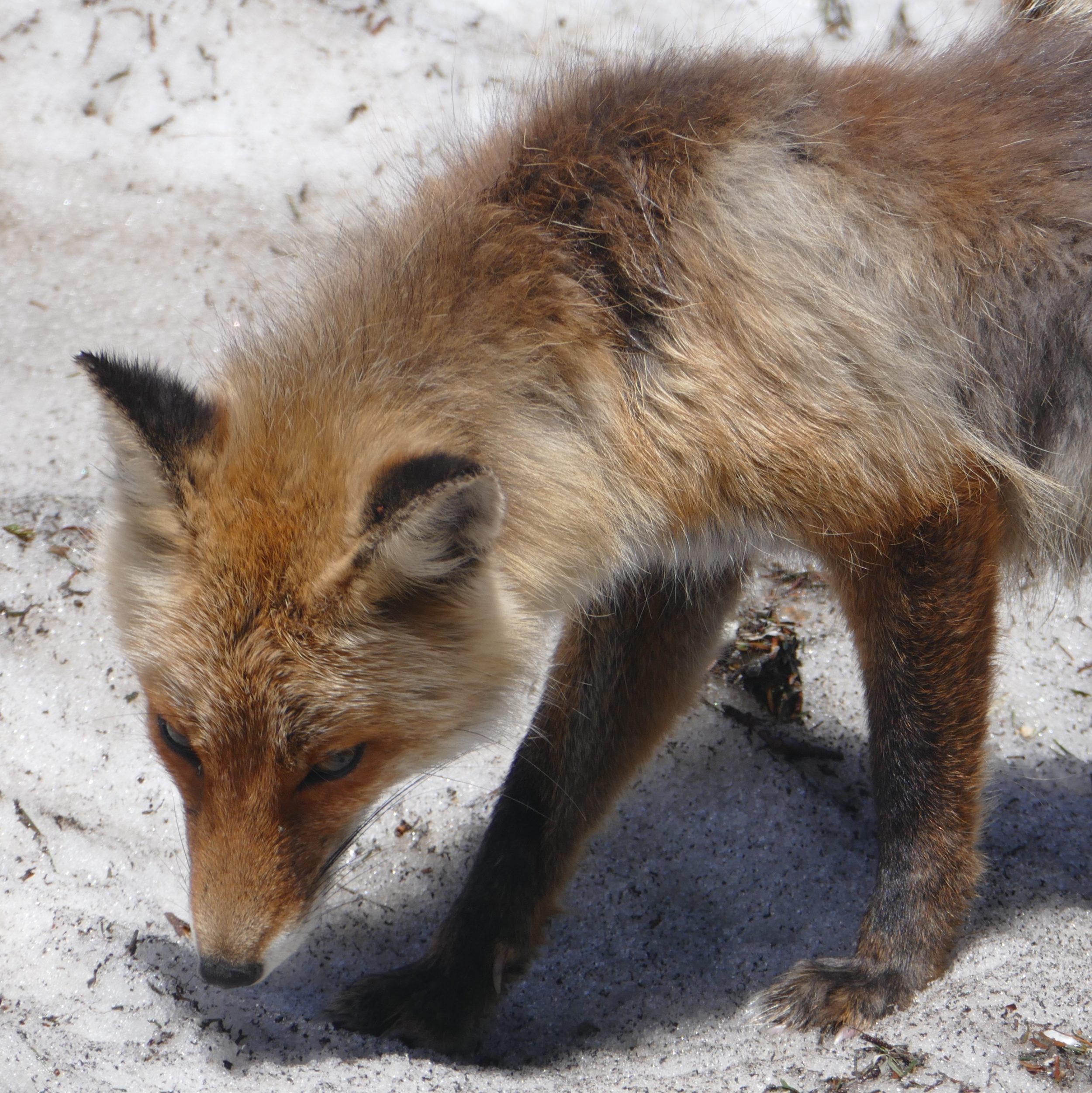
You have probably noticed this fox’s ratty/mangy appearance.
A week earlier – in lower country, in eastern Hokkaido – we had met some much plusher individuals.
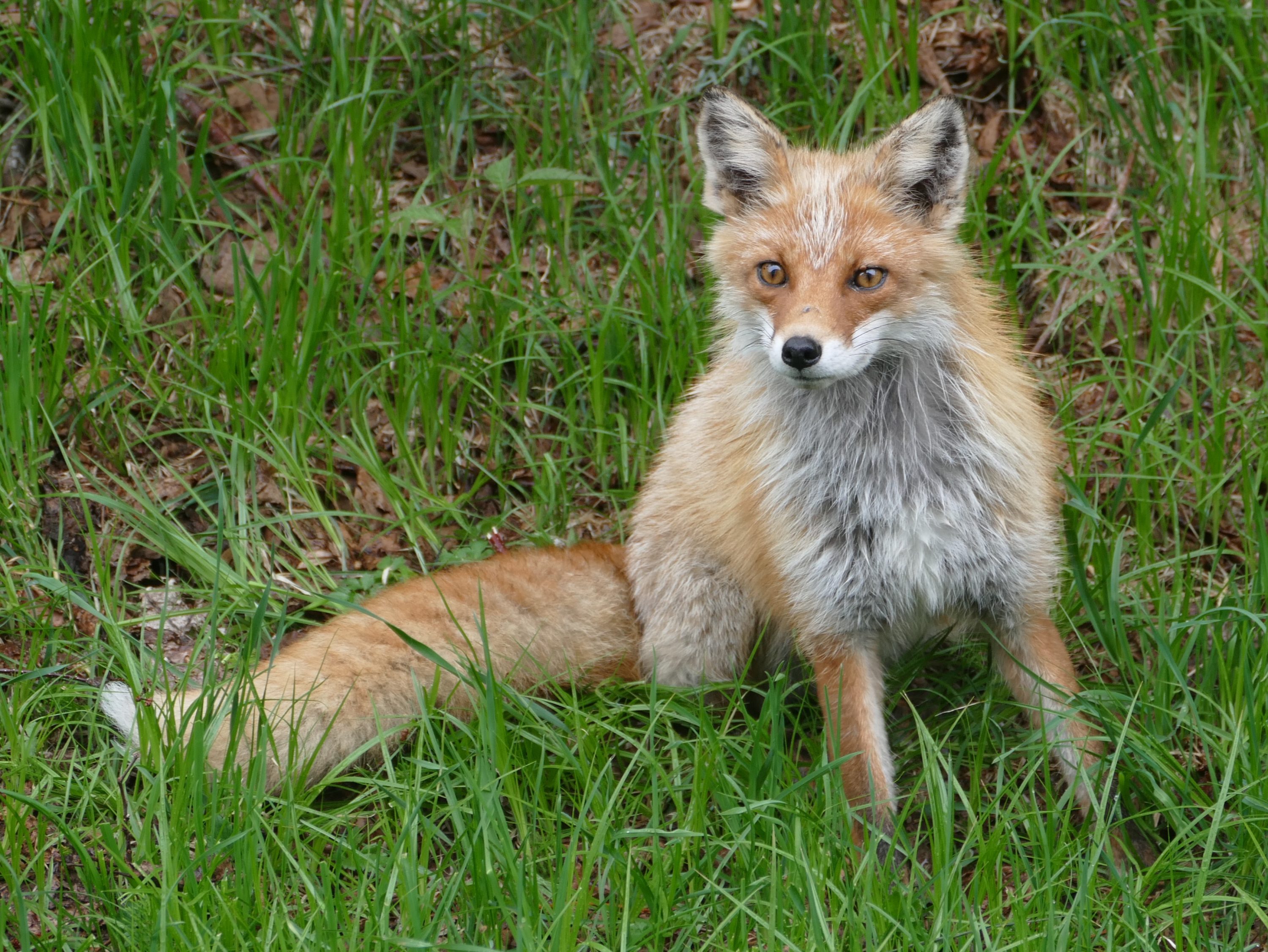
I suspect that the highlander was older, hungrier, and/or more afflicted by parasites.
However, in Hokkaido in Spring, a week is a long time, and this was the time of year when Hokkaido’s foxes shed their winter coats.
Maybe, the lowlander – pictured above with tail very evidently still in “winter warmer” mode – would have had a similarly disheveled appearance if we had met on May 29.
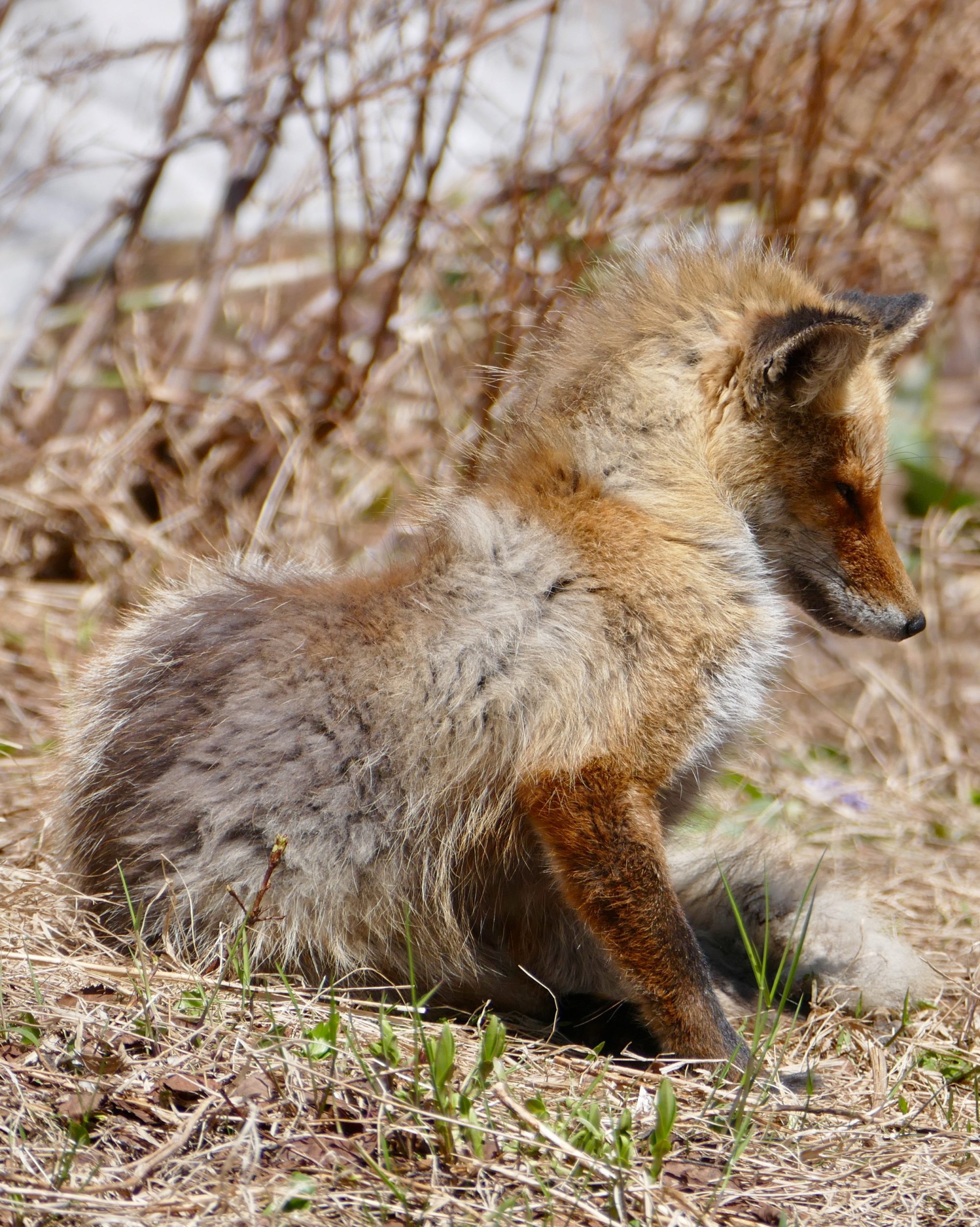
Shortly after I took this post’s final photo the fox ambled uphill, back into the snow.
Our party’s other members thus had a fleeting glimpse of him/her as they made their way down to where we already were.
We were just a little smug when they excitedly informed us of what they had just seen!
